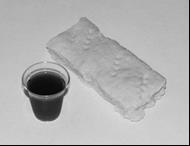As September transitions into October this weekend, more and more cornfields are being harvested around the county. Several have already been chopped for silage while others await picking for the billions of kernels that will be ground into feed for chickens, cattle, hogs, and more. Harvest time is always a special time for every agricultural community.
Another crop that is also being harvested is grapes. With the increasing number of vineyards throughout our valley, our awareness of the grapevine, its life cycle, and its products are growing.
Both of these agricultural commodities share a common fate, however. They will both be crushed to produce the desired products. While some corn is fed whole, most is finely ground and mixed with other feed components. In a similar fashion, grapes are crushed to make wine, juice, jam and jelly with the exception of those few destined for our tables to be eaten fresh.
Although harvested at a different time of year, wheat also must be finely ground to make flour that can be baked into bread that we enjoy almost daily. So too, coffee beans refuse to yield their full flavor unless crushed into fine grounds.
There are many examples from the natural world that are similar. Tomatoes are crushed to produce salsa, ketchup, sauces, and more. Peanuts are ground up for peanut butter, peanut oil, and other products. Olives, apples, peaches, walnuts, and many other fruits and nuts illustrate this as well. Although a few are consumed raw and whole, most all of these are processed which involves crushing and grinding.
The first Sunday in October is World Communion Sunday when Christians around the world gather at the Lord’s Table to remember His death until He comes. To do so, most will use some form of bread, made from crushed wheat, and some drink derived from crushed grapes.
These powerful symbols were instituted by Jesus as He shared the Last Supper with His disciples the night before He was to be broken the next day. He specified the use of these elements for His followers to remember Him since His own body would be beaten and mashed like a kernel of grain or a bunch of grapes to yield forgiveness and wholeness for all who would receive Him.
If He had resisted this debilitating treatment, we would still be lost in our sins with no hope beyond this life. We would be forever guilty of our sins and destined for eternal hell which Jesus spoke of often. But instead of evading such treatment, He willingly submitted to His Heavenly Father’s will showing the full extent of His love as He gave Himself for us.
As they ate the bread and drank the cup that Jesus gave them that night, they unknowingly foreshadowed how His body would be crushed by whips and staffs, fists and feet, nails and thorns. Even the lamb they ate for that Passover meal illustrated how the death of God’s Lamb would be necessary to provide everlasting life.
So too, as followers of Jesus, we must be willing to be crushed and ground to yield the products of God’s choosing. As He suffered, we too must be willing to be insulted, cursed, and even persecuted for righteousness’ sake. It’s neither pleasant nor popular, but it is the way of the Master.
Our human tendency is to resist such mistreatment at all costs. We seek to avoid all humbling experiences and pain in order to live pleasurable lives. And while we shouldn’t intentionally seek self-harm or play the martyr, we also shouldn’t run from it if and when it comes.
As we sit around the Lord’s Table this weekend, may the wine and bread remind us of how Jesus was broken to secure our salvation and may we be willing to follow Him in humility and brokenness whenever called upon to do so, for brokenness produces many beneficial results.
Communion blessings, George
